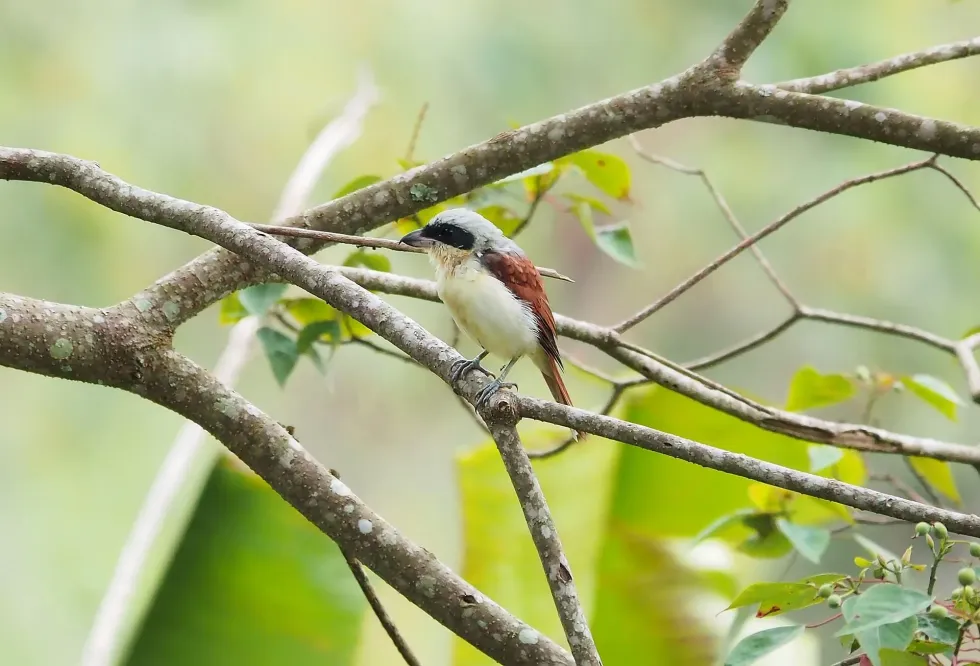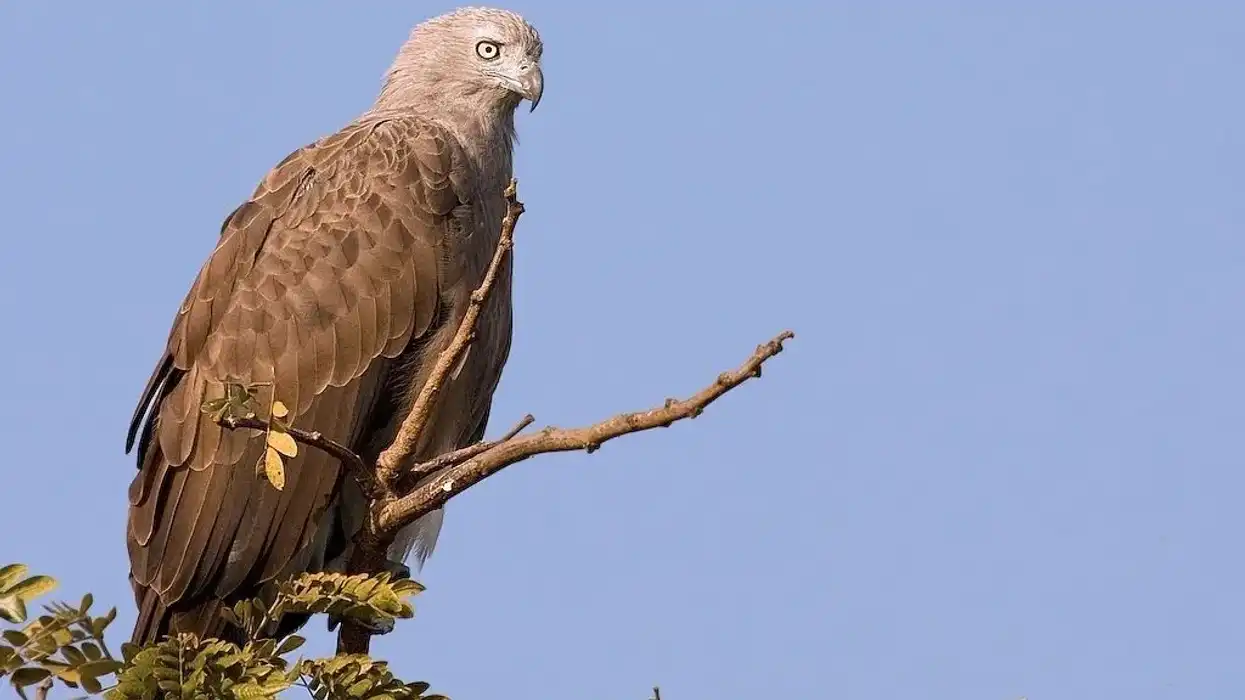The lesser grey shrike (Lanius minor) is a type of small, grey bird that can be found in central and south Europe and western Asia. It is a species of passerine bird, belonging to the Laniidae family.
This bird is known for its distinct black forehead and beautiful, soft grey coloring.
It is mostly carnivorous in nature and hunts its prey by perching on branches and stalking it, swooping down to grab it in its sharp claws. It is known to store any uneaten food for later, though not as much as other species of shrikes are observed to do.
They are quite a common sight in cities and suburbs, often seen making their nests in roadside trees and perching on telephone wires in groups. They can even be observed in gardens and can be fed through a bird feeder.
During the winter season, they migrate from their usual habitat of Europe to live in thorny scrublands in South Africa, returning just in time for spring.
To learn more about these striking grey birds, read on! For more relatable content, check out these northern shrike facts and red-backed shrike facts for kids.
Lesser Grey Shrike Interesting Facts
What type of animal is a lesser grey shrike?
The lesser grey shrike (Lanius minor) is a type of passerine bird species, belonging to the family Laniidae.
What class of animal does a lesser grey shrike belong to?
The lesser grey shrike species belongs to the class of Aves.
How many lesser grey shrikes are there in the world?
Though the exact population of the lesser grey shrike bird species in the world is unknown, they are found in abundance and are currently in no danger of becoming endangered.
Where does a lesser grey shrike live?
The lesser grey shrike species distribution can be found mostly in parts of central and south Europe, and western Asia. This bird is mostly found in France, Russia, Italy, Greece, Romania, and other surrounding countries.
The grey shrike is also found in the Middle East in Asia, mostly in Turkey and Iran. After the breeding season is over, it retreats to a wide belt range in southern Africa, where it stays until it returns to Europe in the spring.
What is a lesser grey shrike's habitat?
During the summer, this bird species will range in open countryside, gardens, and trees in urban environments and heathlands. In the winters, it prefers to settle in thorny scrublands, sparsely populated with bushes and trees.
Who do lesser grey shrikes live with?
These birds can normally be found living in small flocks. During the breeding season, they are often seen in pairs, nesting, and feeding together in their homemade nests.
How long does a lesser grey shrike live?
Though the exact lifespan of this bird species is unknown, its closest related species, the great grey shrike (Lanius excubitor), is known to live for around eight years, meaning this species will probably live for the same length of time. This species usually breeds at the age of one year old, maturing quite quickly.
How do they reproduce?
The lesser grey shrike breeds in the summer and reproduces sexually. These birds pair up and build their nest in trees with high visibility, using various flowering plant stems.
They line these nests with pieces of hair, wool, and feathers that they usually forage from their surroundings.
After the mating process, the female lays about five to seven eggs, which both male and female birds incubate for around 15 days. After hatching, the birds are fed and cared for by both parents for 14 days, after which they leave the nest.
What is their conservation status?
The current conservation status of the lesser grey shrike is of Least Concern according to the IUCN Red List with its area of distribution being quite large and its population stable.
Lesser Grey Shrike Fun Facts
What do lesser grey shrikes look like?
These small birds are a light grey in color, sporting a prominent black forehead and wings. Females have a black forehead speckled with grey, unlike the males who are pure black.
They have a white rectangular patch on their wings, with their long greyish-black tail feathers being tipped with white. Their pale grey underparts are tinged with pink. Their small, sharp beaks and legs are black, with their eyes being round and black as well.
How cute are they?
With their soft grey color scheme and beautifully patterned wings, these birds can be called very cute.
How do they communicate?
These birds have a very shrill call, or 'shriek', which is where the name shrike is derived from. It has a magpie-like call, either being a monosyllabic with a rising and falling pitch, or a short song. They are also known to mimic other birds and mammals, tying these sounds into their song.
How big is a lesser grey shrike?
Lesser grey shrikes are quite small birds, measuring around 7.9 in (20 cm) from beak to tail.
How fast can a lesser grey shrike move?
The exact speed of this shrike is unknown. However, it is a fast bird and its flight is low and smooth. It swoops upwards rapidly, perching on branches to stalk and hunt its prey. It can be seen gliding on air currents using its long wings during migration.
How much does a lesser grey shrike weigh?
These birds weigh around 1.6 oz (45.4 gm) on average.
What are the male and female names of the species?
There are no specific names for the males and females of this species. Male birds are called cocks and female birds are called hens.
What would you call a baby lesser grey shrike?
Babies of the lesser grey shrike species are called chicks, fledglings, or hatchlings.
What do they eat?
These European birds are mostly carnivorous in nature and can be found perching in tree branches, stalking their prey from afar. Once they are in position, they swoop down and catch their prey with their claws.
This includes a variety of insects such as crickets, millipedes, moths, butterflies, beetles, and grasshoppers. They have also been observed to feed on cherries and berries, though this is very rare.
Are they dangerous?
Shrikes are quite aggressive in nature and can be quite territorial. It is best not to approach these birds in the wild and be subjected to the wrath of their sharp beaks and claws.
Would they make a good pet?
As these birds are quite aggressive and predatory in nature, they would not make great pets. They are also non-residential birds, meaning they are used to migration and relocating for the winter.
These birds are usually not bred as pets because pets stay with their owners for their whole lives in one place. If you are looking for an affectionate, playful bird to bond with, the lesser grey shrike is not your best option.
It is better to admire this species from a distance. Despite these reasons, it is also illegal to own shrikes in most places due to their predatory temperament.
Did you know...
These shrikes often pierce their prey with thorns or twigs to keep them for later. Males are known to start stockpiling food only after feeding the female her fill of the prey.
It is very closely related to the great grey shrike (Lanius excubitor), its appearance and call being almost the same. The only difference is in their sizes, with the Lanius minor species being smaller in size. The greater grey shrike (Lanius excubitor) is 8.7-10.2 in (22-26 cm) in length.
The name 'lanius' comes from the Latin term for 'butcher', which describes these predatory birds quite well.
Do lesser grey shrikes migrate?
Yes, lesser grey shrikes are a migratory bird species that resides and breeds in central and southern Europe during the summer, and retreats to southern Africa for the winter. Its habitat differs during these periods as well.
Its summer breeding distribution is in the open countryside, heathlands, common gardens, and trees in urban areas.
In the winter, this bird prefers to inhabit scrublands and makes it home in thorny trees and bushes. It departs for South Africa in the fall after the breeding season, and returns to its home in the spring, just before the next breeding period.
Are shrikes raptors?
Raptors refer to larger birds who mainly hunt and eat insects, small animals, and other birds, being carnivorous in nature. They are medium to large in size and have razor-sharp beaks and talons for the purpose of hunting and tearing their prey.
Though the lesser grey shrike is a mostly carnivorous bird species and hunts for its prey, it does not have the signature sharp, heavy talons possessed by raptor species.
This means this species cannot be called a raptor. Some raptor species include the golden eagle, peregrine falcon, and owls.
Here at Kidadl, we have carefully created lots of interesting family-friendly animal facts for everyone to discover! Learn more about some other birds from our prairie falcon interesting facts and golden masked owl surprising facts pages.
You can even occupy yourself at home by coloring in one of our free printable bird nest coloring pages.









